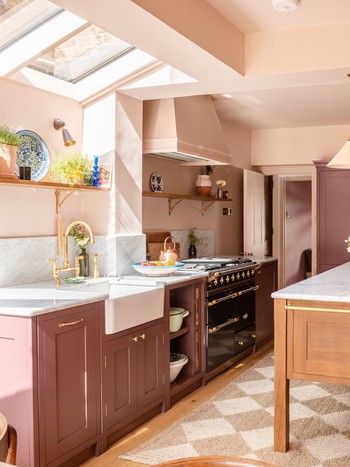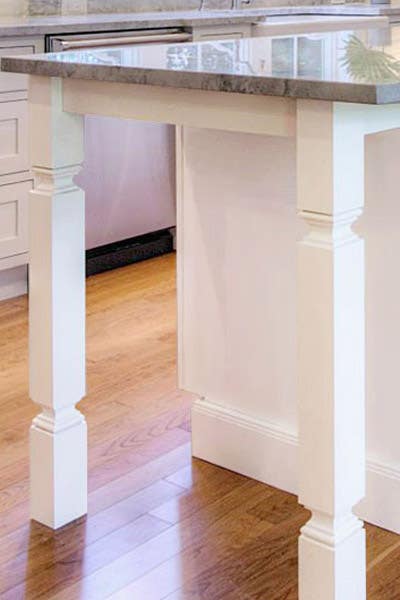Count On Professional Workmanship for Tailored Legs For Kitchen Island Ideas
Count On Professional Workmanship for Tailored Legs For Kitchen Island Ideas
Blog Article
Necessary Aspects to Take Into Consideration When Picking Legs For Cooking Area Island
Selecting the suitable legs for a kitchen island entails a careful analysis of numerous factors that can substantially influence both capability and aesthetic appeal. As we check out these elements, it comes to be clear that each decision can have far-ranging ramifications for the general kitchen area experience.
Material Options
When picking legs for a kitchen area island, understanding the numerous product choices is important for achieving both aesthetic allure and architectural integrity (Legs For Kitchen Island). The choice of material considerably affects not just the resilience of the island yet also its overall design and capability
Steel legs, often made from stainless steel or functioned iron, add a industrial and modern feel while ensuring resilience and stability. These materials are immune to put on and can sustain considerable weight, making them suitable for bigger islands.
One more choice is engineered materials, like MDF or plywood, which can be extra cost-efficient while still supplying an array of coatings. Nevertheless, they may not provide the same level of security as strong wood or metal. Products such as acrylic or glass can create a modern look, though they may call for extra support to make certain stability.
Ultimately, the option of material for kitchen island legs need to line up with the desired capability and the general motif of the kitchen area.
Style and Layout

When thinking about design, the form and surface of the legs are essential. Conical legs can give a feeling of agility and elegance, while thicker, much more robust legs can convey strength and stability. Additionally, the finish-- be it repainted, stained, or all-natural-- must enhance the kitchen cabinetry and kitchen counter products to produce a unified look.
Furthermore, the style of the legs can also reflect individual taste. Custom-made or ornamental legs, such as those featuring elaborate carvings or unique geometric forms, can serve as focal points, adding personality and individuality to the kitchen area. Eventually, the best choice will certainly not just boost capability however likewise elevate the visual charm, making the kitchen area island a standout feature of the home.
Elevation Considerations
Picking the suitable elevation for kitchen island legs is vital, as it directly influences both capability and comfort. The basic elevation for a kitchen island usually ranges from 36 to 42 inches, straightening with usual kitchen counter heights.

It is also necessary to account for customers' choices and heights. Tailoring the elevation can guarantee a comfortable experience this for all member of the family, making the kitchen island an extra useful and delightful area.
Weight Assistance
Making sure sufficient weight assistance for kitchen area island legs is vital for both safety and security and performance. The cooking area island commonly serves numerous functions, consisting of cooking, eating, and extra storage space, requiring a durable support framework. When selecting legs, it is critical to think about the total weight capacity called for based on the island's meant usage and the materials that will certainly be positioned on it.
The option of product for the legs plays a considerable duty in their weight-bearing capabilities. Strong timber, metal, and durable compounds typically supply superior stamina contrasted to lighter materials. Furthermore, the layout of the legs-- whether they are straight, tapered, or have a pedestal type-- can affect their capacity to distribute weight efficiently throughout the framework.
Constantly consult the manufacturer's specifications regarding load limits to ensure that the legs can sustain the intended weight without endangering safety and security. In recap, choosing cooking area island legs with appropriate weight assistance is necessary for producing a risk-free and functional cooking room.
Setup and Maintenance
Proper installment and maintenance of kitchen area island legs are vital for ensuring longevity and security. This often entails securing the legs to the island base making use of ideal bolts, ensuring that the legs are degree and lined up.
When set up, routine upkeep is essential to maintain the integrity and appearance of the legs - Legs For Kitchen Island. For wood legs, periodic cleansing with a moist cloth and application of ideal timber polish can protect against moisture damages and maintain their surface. Steel legs may need a mild cleaning option to get rid of grease and gunk, adhered site link to by a dry fabric to protect against rust development
In addition, inspect the legs on a regular click here to read basis for indicators of wear or damages, such as cracks or loose joints. Tightening screws or bolts as needed can likewise extend the life expectancy of the legs. By sticking to these installation and maintenance techniques, homeowners can make sure that their kitchen area island remains durable and visually appealing for years ahead.
Final Thought

Aesthetic comprehensibility is paramount in choosing the design and layout of legs for a cooking area island, as these elements significantly affect the total setting of the room. Tapered legs can provide a feeling of lightness and beauty, while thicker, a lot more durable legs can share toughness and stability.Choosing the suitable height for kitchen area island legs is vital, as it straight influences both capability and convenience. In summary, picking cooking area island legs with ample weight assistance is essential for creating a safe and functional culinary space.
In verdict, picking legs for a cooking area island demands careful factor to consider of numerous variables, consisting of product choices, style, height, weight support, and installment.
Report this page